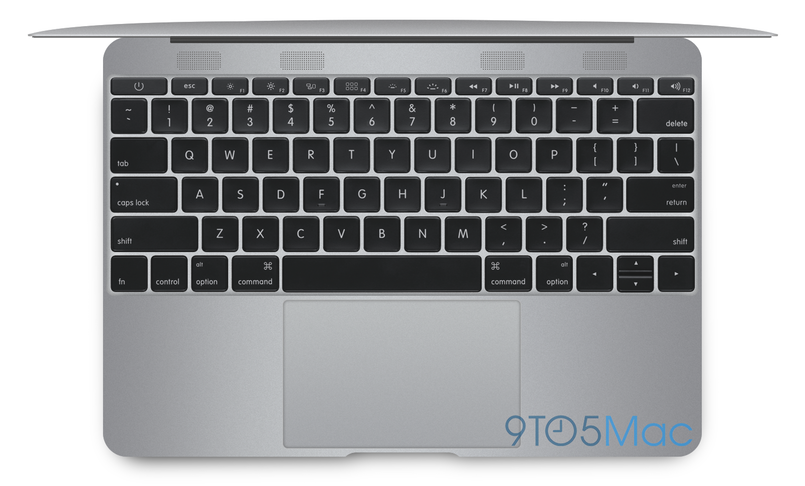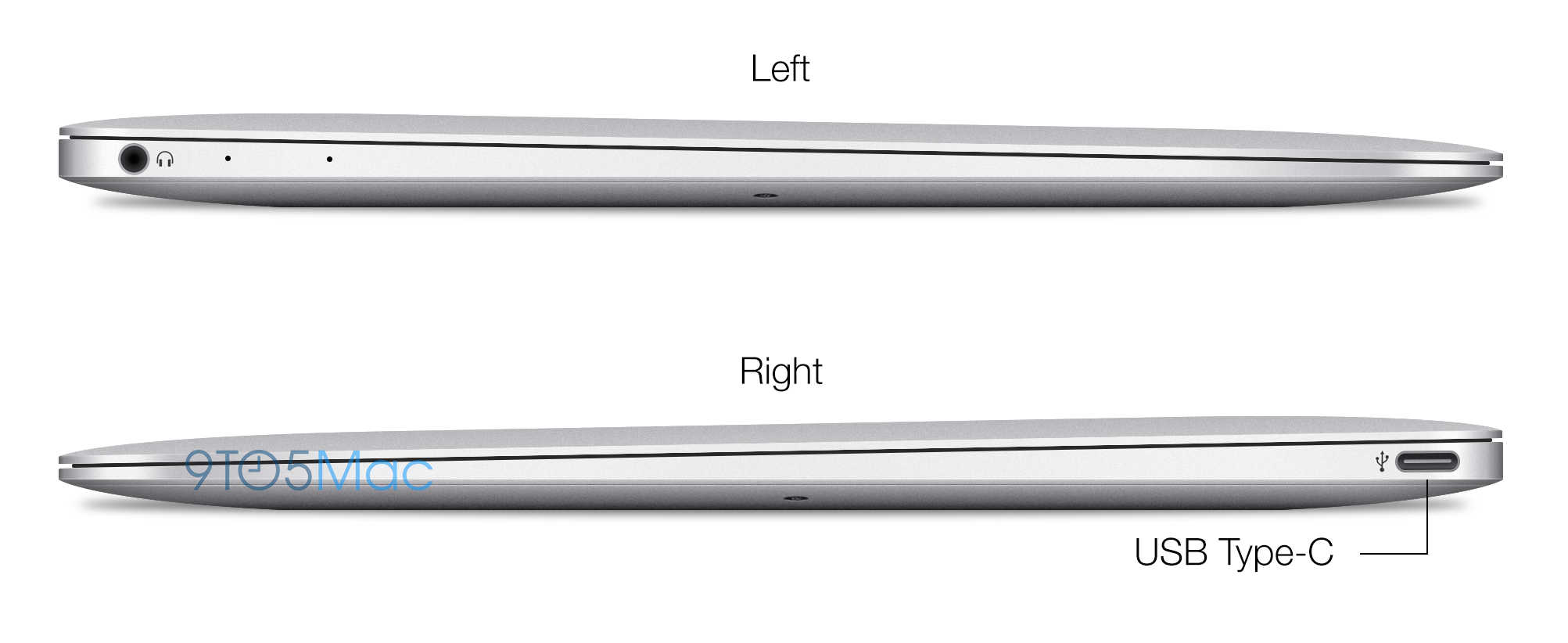A well-sourced report from 9to5Mac’s Mark Gurman has ignited a heated debate on social media about the practicability of a brand new twelve-inch MacBook Air model as it’s said to ditch standard USB ports, the SD Card slot and even its Thunderbolt I/O and MagSafe power connector in favor of a single, fully reversible USB Type-C port.
Critics who call it a step back usability-wise, not forward, mention the original MacBook Air which released in January 2008 with just one USB port on it. On the other hand, they forget that USB Type-C does a lot more than standard USB. For starters, it can safely replace Thunderbolt for video and data I/O and MagSafe for charging.
That being said, there are still some fundamental questions like how am I supposed to connect an iPhone to the machine if the only USB port is used for charging? I’ll ellaborate on the viability of a one-port MacBook Air further below, but first tell us, if you will, your initial reactions to the purported design of the forthcoming notebook.
Again, if Gurman’s report is accurate, the USB Type-C port will be used for everything from connecting an external display and power to hooking up USB peripherals. I’m perfectly fine with that yet puzzled as to why Apple would include only one USB Type-C port and not two?
Before I dive into it, cast your vote below.
Back to the question I posed in the opening paragraph: assuming there’s in fact just one USB port, how am I going to connect USB accessories like thumb drives, digital cameras or iOS devices if my latest and greatest MacBook Air is already connected to the charger via a USB cable?
For starters, and I’m taking a wild guess, Apple may have devised a wireless charging solution for the upcoming twelve-incher. If not, a USB Type-C splitter or hub may ship with the notebook, or sell separately.
A hub would let me plug multiple accessories into the new MacBook Air while using one of the shared ports for charging. Still, anyone wishing to plug a Lightning-enabled iOS device directly into the new Air might need to invest into a USB Type-C to Lightning connector, which doesn’t exist yet.
For those wondering, the USB 3.1 Type-C can carry a lot more power than any MagSafe connector Apple has ever designed. We’re talking up to hundred watts of power and data transfer speeds of up to 10Gbps, or twice the 5Gbps available on USB 3.0.
It also supports scalable power charging between three and five amperes, up from 1.5A available with standard USB 3.0 found on current Mac notebooks and desktops.
All checks indicate Apple must have chosen such a radical path of action in order to make the significantly revamped machine extremely portable. I won’t be surprised if it ends up being lighter and thinner than the iPad Air — according to an artist rendition provided by 9to5Mac, it’s considerably thinner than the existing 11-inch Air.
As crazy as it sounds, the biggest hurdle to shrinking down the Air is the ports: existing USB ports just take up too much space. Enter USB 3.1 Type-C, a new standard featuring markedly smaller footprint. The Type-C receptacle opening measures just 8.4-by-2.6mm, which puts it close to USB 2.0 Micro-B size-wise.
Given the drastic shrinkage of the Air and the adoptiong of the new USB 3.1 Type-C, existing plugs and receptacles won’t work with the new, tiny USB port. Therefore, adapters will be needed to plug USB 3.0 products into the Air’s USB 3.1 Type-C port.
If it’s any consolation, the USB 3.0 Promoter Group said last year that the USB 3.1 Type-C design scales for future USB bus performance so Type-C ports and connectors should remain unchanged in years to come.
It shouldn’t be too long until Apple clears up the confusion — the 12-inch MacBook Air is reportedly in production (if you believe supply chain chatter). On the other side of the spectrum, pesimists are leaving the timeline open to somewhere in 2015, probably around Apple’s developers conference in June or July.
At any rate, Intel has just taken the wraps off its new “Broadwell-U” processors suited for a fanless, ultra-portable Air and vendors like Samsung, Dell and HP have already announced next-generation Ultrabooks around them so I imagine Apple won’t wait too long to release a MacBook Air that achieves a thin design without a fan.
Wrapping up, I really hope Apple won’t ditch MagSafe.
That technology has solved a real-life problem of tripping over power cables. Are we serioussly supposed to go back to the old days when tripping over the power cable would drag your Mac to the ground?
And you two cents?
Share your perspective with fellow readers and tell us why you voted the way you did down in the comments.



